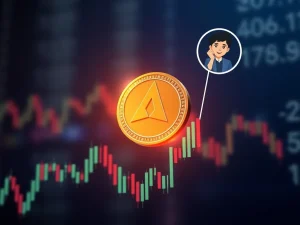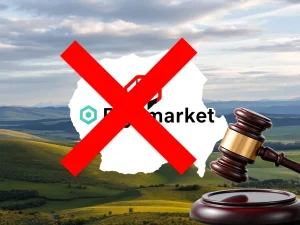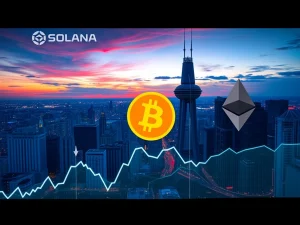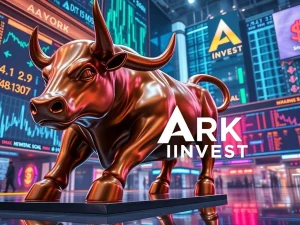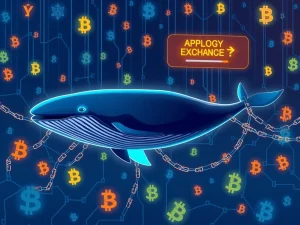XRP News: Unlocking Explosive Growth Potential with Treasury Backing
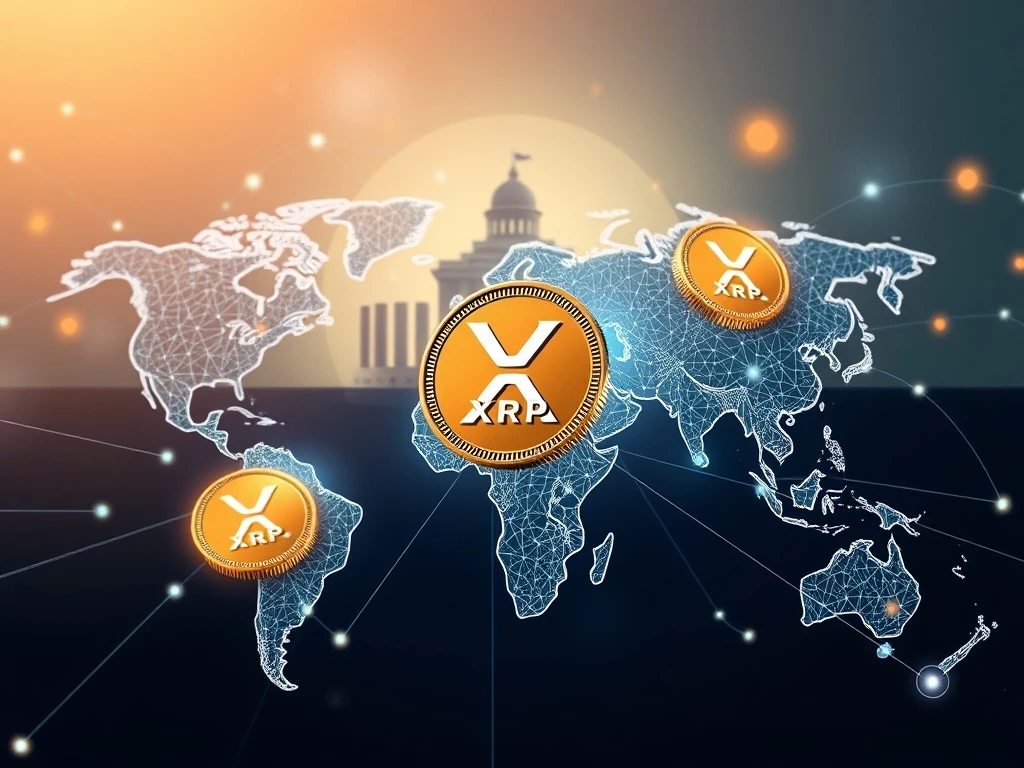
The world of cryptocurrency is abuzz once again with renewed optimism surrounding XRP. Recent developments, particularly a significant endorsement from the U.S. Treasury, are putting XRP News front and center, reigniting discussions about its role in revolutionizing global finance.
XRP News Today: A Resurgence in the Spotlight
XRP, long a prominent player in the crypto space, has recently re-entered the spotlight with a renewed sense of purpose and potential. This resurgence is largely fueled by significant external validation, particularly from high-level government officials. When U.S. Deputy Secretary of the Treasury Michael Faulkender publicly highlighted the transformative power of blockchain technology for cross-border payments, it sent ripples of excitement through the XRP community.
Faulkender’s remarks underscored the inherent advantages of distributed ledger systems: efficiency, speed, and reduced costs. He noted that settlements could occur in mere minutes, or even seconds, while simultaneously bolstering privacy and security. For XRP proponents, this wasn’t just a general statement about blockchain; it was a powerful affirmation of Ripple’s XRP Ledger (XRPL). Many argue that the XRPL is uniquely positioned to become a foundational element of global financial infrastructure, potentially offering a modern alternative to legacy systems like SWIFT.
U.S. Treasury’s Vision: Blockchain Technology for Global Payments
The U.S. Treasury’s perspective on blockchain technology isn’t just theoretical; it’s deeply practical, especially concerning its application in international finance. Deputy Secretary Faulkender’s insights went further, linking the burgeoning use of stablecoins to an increasing demand for U.S. Treasury securities. This dynamic creates a beneficial environment for ecosystems like XRP’s, which are deeply integrated with stablecoin solutions.
Ripple’s own RLUSD stablecoin is already a part of its cross-border solutions, with XRP serving as a crucial bridge asset. This function allows for low-cost, rapid liquidity transfers between traditional fiat currencies and digital assets. Analysts suggest that if stablecoins achieve significant adoption in global trade, the demand for underlying assets like XRP could see exponential growth. This vision aligns perfectly with the need for more efficient and secure cross-border payments, a sector ripe for disruption.
Institutional Confidence: The Power of XRP Investment
Beyond governmental endorsements, tangible institutional backing is a critical factor for any cryptocurrency’s long-term viability. A recent and notable example of this confidence is the significant XRP investment of $20 million by NASDAQ-listed Nature’s Miracle Holding. This substantial commitment from a publicly traded company underscores a growing belief in XRP’s utility and future prospects within the traditional financial landscape.
Such investments are not merely speculative; they often reflect a strategic move by institutions looking to leverage digital assets for real-world applications. The integration of XRP into corporate strategies, particularly for facilitating efficient international transactions, could pave the way for broader institutional adoption. This influx of capital and validation from established entities can provide crucial stability and legitimacy to the asset, attracting further interest from both institutional and retail investors.
Navigating the Future: Understanding XRP Price Target Projections
The buzz around XRP isn’t just about its technological potential; it’s also heavily focused on its financial trajectory. Bullish projections for the XRP price target have captured significant attention, with some industry observers predicting XRP could reach between $15 and $30 within the next 12 to 24 months. These ambitious forecasts are often predicated on key developments, including the potential approval of an XRP Exchange Traded Fund (ETF) and a surge in institutional adoption.
However, it’s crucial to balance this optimism with a realistic assessment of the challenges. Achieving a $1.5 trillion market capitalization, which would correspond to approximately a 7x price increase to $27, requires overcoming significant regulatory hurdles and consistently demonstrating its superior settlement capabilities. Furthermore, XRP’s history includes periods of intense volatility, notably a sharp decline from its 2018 peak of $3.45 amidst legal battles, which has tempered some investor enthusiasm. The path to these price targets is complex and depends heavily on a confluence of market forces and regulatory clarity.
The Dual Path: Challenges and the Road Ahead for XRP
While the future for XRP appears promising, it is not without its significant hurdles. The debate around XRP’s future largely hinges on its ability to demonstrate tangible, widespread utility in global finance. A hypothetical $30 price target, for instance, relies on several critical factors aligning:
- Regulatory Clarity: The ongoing need for clear regulatory frameworks in major jurisdictions is paramount.
- Sustained Institutional Investment: Continued and increasing capital inflows from large financial institutions.
- Ripple’s Execution: Successful implementation and expansion of Ripple’s cross-border payment strategy.
While the XRP community rightly highlights the technology’s alignment with global payment needs, critics caution against overvaluation risks in what remains a crowded and competitive crypto market. In the near term, XRP’s performance will likely continue to mirror broader macroeconomic trends and general crypto market cycles. A push towards a $400 billion to $800 billion market capitalization—comparable to Bitcoin and Ethereum’s historical gains—remains a realistic, albeit gradual, trajectory.
Analysts consistently stress that treating XRP as a speculative shortcut to wealth is misguided. Its long-term success is intrinsically linked to fundamental drivers: widespread institutional adoption, clear regulatory acceptance, and sustained demand from both retail and institutional investors. The journey ahead for XRP is one of demonstrating proven utility and navigating a dynamic global financial landscape.
Conclusion
The recent surge of positive XRP News, buoyed by endorsements from the U.S. Treasury and significant institutional investments, paints an optimistic picture for its future in revolutionizing cross-border payments. The potential for XRP to serve as a cornerstone of global financial infrastructure, coupled with ambitious price targets, underscores its growing prominence. However, the path forward is not without its challenges, including regulatory complexities and the need for sustained, demonstrable utility. As the crypto market evolves, XRP’s journey will be a testament to the interplay between technological innovation, institutional confidence, and regulatory acceptance, ultimately determining its role in shaping the financial landscape of tomorrow.
Frequently Asked Questions (FAQs)
1. What is the significance of the U.S. Treasury’s comments on blockchain for XRP?
U.S. Deputy Secretary of the Treasury Michael Faulkender’s comments highlight blockchain’s potential for efficient, fast, and secure cross-border payments. For XRP, this is significant because its underlying technology, the XRP Ledger, is specifically designed for these very applications, validating its proposed utility in global finance.
2. What does the $20 million investment by Nature’s Miracle Holding mean for XRP?
The $20 million investment by NASDAQ-listed Nature’s Miracle Holding signifies growing institutional confidence in XRP’s utility and long-term potential. It suggests that traditional financial entities are increasingly recognizing and investing in digital assets like XRP for their practical applications, such as facilitating efficient international transactions.
3. Are the $15-$30 XRP price targets realistic?
While some analysts project XRP reaching $15-$30, these targets are considered ambitious and depend on several factors. They hinge on significant institutional adoption, the potential approval of an XRP ETF, and overcoming substantial regulatory hurdles. Achieving such a price would require XRP to reach a market capitalization comparable to leading cryptocurrencies, which is a gradual and challenging process.
4. What are the main challenges facing XRP’s adoption and price growth?
Key challenges for XRP include achieving clear regulatory clarity, particularly in the United States, proving its settlement capabilities at scale, and demonstrating consistent utility that warrants a significant market capitalization. Historical volatility and market competition also pose ongoing challenges.
5. How does XRP function in cross-border payments?
XRP functions as a bridge asset in cross-border payments. It allows financial institutions to quickly and cheaply convert one fiat currency into XRP, send it across borders, and then convert it into the desired destination fiat currency. This bypasses traditional, slower, and more expensive correspondent banking systems.
6. Is XRP considered a good long-term investment?
XRP’s long-term investment potential is debated. While its technology aligns with global payment needs and it has institutional backing, its success depends heavily on regulatory acceptance, widespread institutional adoption, and sustained demand from both retail and institutional investors. It is generally advised not to treat XRP as a speculative shortcut to wealth but rather as an asset whose value is tied to its utility and adoption in real-world financial systems.


